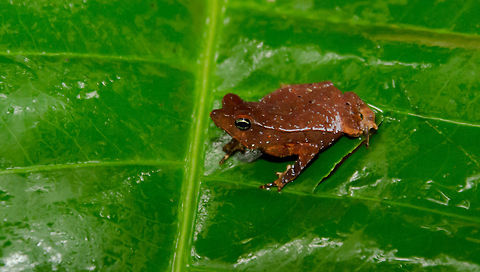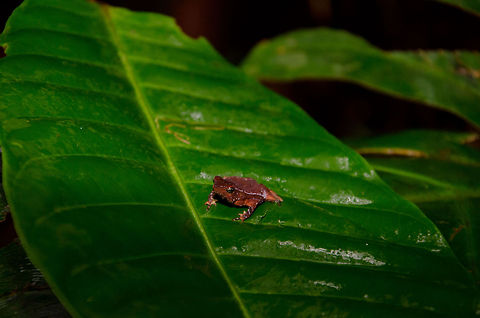
Appearance
Rhinella hoogmoedi sp. nov. is characterized by the medium size for the genus (snout-vent length 39.4-52.1 mm in males), snout rounded in dorsal view, with a vertical apical ridge which gives a nearly mucronate aspect, and nearly acute in profile, antorbital and supra-orbital crests developed, parietal crest poorly developed, post-orbital crest large, forming a small lateral ledge, tympanum evident, vertebral apophyses not salient on dorsum, presence of a dorsolateral line of pointed tubercles on the external border of the parotoid gland, continuing along the lateral side of body to the groin, a rounded tubercle at the posterior corner of mouth, and vocal slits present.Distribution
Brazil (Alagoas, Bahia, Ceará, Espírito Santo, Paraná, Pernambuco, Rio de Janeiro, São Paulo)Behavior
Individuals of Rhinella hoogmoedi may be found inside the forest at night, resting on vegetation a few centimeters above the ground. The reproduction is explosive, when males can be heard by day and night. Males vocalize on the ground or tree trunks up to 60 cm above the ground near ponds or slack water of rivulets inside forest or restinga (Caramaschi and Pombal, 2006).References:
Some text fragments are auto parsed from Wikipedia.
http://www.scielo.br/scielo.php?pid=S0031-10492006002300001&script=sci_arttextAriadne Angulo 2008. Rhinella hoogmoedi. The IUCN Red List of Threatened Species. Version 2014.3. Downloaded on 16 February 2015.
http://www.iucnredlist.org/details/136141/0
